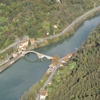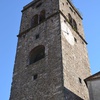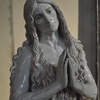Borgo A Mozzano castle
Borgo a Mozzano is located along the road that ran through the valley, on the right bank of a meander in the river Serchio, not far from the important bridge crossing of Ponte della Maddalena, at the foot of Mount Agliata.
Commissioning of the bridge of Ponte della Maddalena (commonly known as “Devil’s Bridge”) is attributed to Countess Matilde of Canossa in the 13th century. It is, with its impressive structure, a major attraction and a symbol of the Serchio Valley. The grandeur of the central arch has inspired numerous stories and legends, including that of it being the devil's work.
Also of note is the Church of San Jacopo, with three naves and numerous works of great value such as a 15th-century precious terracotta monochrome attributed to Andrea della Robbia depicting the Maddalena, a San Bernardino attributed to Matteo Civitali and a stained glass window of the Annunciation attributed to Benedetto Buglioli.
Other points of interest within the town centre are the 16th century Church of San Rocco with 19th century frescoes by Luigi Ademollo, the Convent of St. Francis (1525) with a beautiful cloister and 16th century frescoes and the Church of SS. Crocifisso with two terracotta statues dated from the beginning of the 15th century depicting St. Anthony and St. James and a wooden crucifix from the 16th century.
Historical notes
The first written records of the settlement of “Loco Muzzano” date from 879 and 995, while only in 1247 does it appears under the name “Burgo de Moçano”. The “castle”, however, is mentioned in passing in 1027 and in 1297 in the sales of some land “prope castello de Moçano”, translating to “near the castle of Moçano”.











